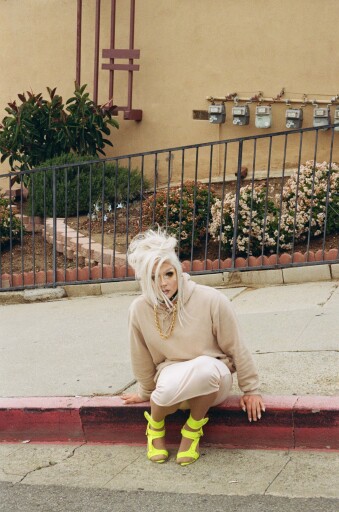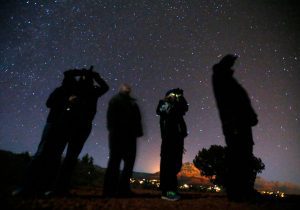“SCHINDLER HOUSE LOS ANGELES. SPACE AS A MEDIARY OF ART” | Mac

Marking the 100th anniversary of the Schindler House in Los Angeles, MAK dedicates an exhibition to its branch
Vienna – Marking the 100th anniversary of the Schindler House, Los Angeles (Rudolph M. Schindler, 1922), MAK dedicates an exhibition (March 30 – July 31, 2022) to its branch that reflects Schindler’s concept of art, architecture, and design. The exhibition quotes a quote from Schindler himself, who understood “space as a means of art”. Sculptures, installations, objects, photographs, videos and projects by Austrian and international artists are on display, illuminating the formal language and ideas of Schindler whose positions are recorded in the house’s history. One focus is on previous participants of the popular MAK Schindler Scholarship Program.
The house of architect Rudolf M. Schindler (1887-1953), who emigrated from Vienna in 1914, serves as a model for modern forms of living together and brings together his conception of architecture. Schindler, who contributed to modernity with experimental concepts, utopian social ideas, and hybrid forms, lived a vision of his time in the Schindler home with his wife Pauline Schindler (1893-1977) and Richard Neutra with his family: living and working in community.
“The Modern Architect Thinks of Space,” Schindler wrote in his manifesto Modern Architecture: A Program (Vienna 1912/13), which he paraphrased into a version of the 1930s: “The architect has finally discovered the medium of his art: the void.” Schindler later expanded his concept: the development of “space as a means of art” aligns with his approach to architecture, as described in a 1943 letter to Elizabeth Mok, Department of Architecture, MoMA, New York.
In the exhibition of the same name, the citation opens space for contributions by artists Vincent Fictoux, Andreas Fogarassi, Candida Hofer, Martin Kippenberger, Marco Lulich, Dorit Margretheer, Gordon Matta Clark, Ulrich Muller, Raymond Pettibone / Jason Rhodes / Hans Wiegand, Sacha Berker , Stephen Brenna, Florian Baumhausel, Marusa Sagadin, Rudolf M Schindler, Julius Schulman, Philip Temichl and Jenny Teicher.
The artists’ contributions establish connections to the imaginary spaces created by Schindler House and shed light on Schindler’s architectural language and discourses about space, form, and abstraction. Two exhibition rooms of different temperatures are used: the reworking of the object, the architectural part and the modular form the presentation framework in the MAK Works on Paper Room, which corresponds to the historical works and works in the private and public spaces of the MAK Directorate.
The entrance to the exhibition is the installation “Corner” (Lulić “House No. 1”) (2006) in the columned MAK Hall, depicted by Marko Lulić as a spatial sketch. Among other things, images from the series “Schindler House, Los Angeles” (2000) by Candida Höfer, which focused on the structures and situations inside, will be shown. Photographer Julius Schulman’s footage from the 1950s to the 1990s shows what it was or could be like living in the Schindler House. Furniture designed by Schindler for the apartment of Russian immigrant Beata Annaya is paired with Stephen Brenna’s installation “As He Remembers It, Living Room Class” (2011). For his work, Brenna chose pink as a symbol that generates a story of reconstruction and authenticity. Inaya, on the other hand, painted her furniture, which can be seen in the gallery, restored—without a coat of paint—a modern pink, as Pauline Schindler did an entire room in Schindler’s house.
Based on the idea of conceiving ‘photography as a sculpture’, Vincent Ficeau weaves digital images into collages or collections and opens our eyes to the inner crumbs. Loosely arranged next to Prina’s abstract display of furniture according to Schindler, Fecteau draws the links of the living.
Furniture designed by Rudolph M. Schindler for his home is the subject of the exhibition in Sasha Pirker’s film Donald Judd and Me (2016). After visiting the Schindler home, Judd recreated the furniture and furnishing of the Whyte Building in Marfa, Texas, where he also displayed abstract paintings from the 1960s. The group exists to this day.
Rudolf M. Schindler’s model was Frank Lloyd Wright, who worked in his architectural office for four years and whom Schindler called a “room architect.” In her “Textile Blocks” photo series (2019), Dorit Margreiter documents the building blocks of the facade of Wright’s Ennis House (1924) in Los Angeles, consisting of geometric shapes as a continuous pattern. Organized in the form of a strip, the blocks signify the relationship between textiles and architecture. In his series “Plastic” (2018), Florian Baumhausel experiments with modern models of abstraction, which he collected in sculptural forms. Fragile plasterwork combines decoration and space.
In the MAK Gallery, he traces the conceptual thinking of Rudolph M. The work refers to a modern terrace complex from 1925 planned by Schindler with the help of Richard Neutra at Olive Hill.
In his portraits of Philip Temichl “Too Blessed To Emphasize, And Too Busty To Be Bothered” (2019), Philip Temichel uses the public space of Los Angeles. To take a picture, create a drag character who hits different poses around the city. Martin Kippenberger’s “MetroNet Project” (the 1990s) leads to the imaginary space of travel and connects continents – a planned vent shaft in Tokyo was installed in the garden of Schindler’s house in 1998.
Schindler’s Houses (2007) by Heinz Emigols will be shown as a supporting program for the exhibition (MAK Auditorium: Tuesday, April 19, 2022, 6:30pm, Tuesday, May 3, 2022, 6:30pm).
Mac Center for Arts and Architecture, Los Angeles
Founded in 1994 by MAK under the direction of Peter Noever in collaboration with the Austrian Federal Chancellery/Art Department and “Friends of the Schindler House” as an offshoot of MAK, MAK Center implements an extraordinary concept: Three Schindler Houses of architectural and historical significance for exhibitions and events – plus to Schindler House (RM Schindler, 1922) in West Hollywood, to Fitzpatrick-Leland House (RM Schindler, 1936) and Mackey Apartments (RM Schindler, 1939). The MAK Artists and Architects-in-Residence Program is an integral part of the MAK Centre.
Gallery images are available for download at MAK.at/presse.
Press data:
Press conference: Tuesday, March 29, 2022 at 10:00 am
Participation versus registration under the press@MAK
Current COVID-19 safety regulations for juveniles apply, see MAK.at/schutzmassnahmen
Opening: Tuesday, March 29, 2022, 7:00 p.m. (Free admission from 6:00 p.m.)
Venue: MAK DIRECTION and MAK work in the paper room
Mack, Stopring 5, 1010 Vienna
Exhibition Duration: 30 March – 31 July 2022
Opening Hours: Tuesday 10:00 AM – 9:00 PM, Wednesday – Sunday 10:00 AM – 6:00 PM
Curator: Bärbel Vischer, Curator MAK . Collection
contemporary art
Supporting programme: Screening of Schindler’s Houses (2007) by Heinz Emiguls, MAK Auditorium: Tuesday, April 19, 2022, at 6:30 p.m., and Tuesday, May 3, 2022, at 6:30 p.m.
MAK Admission: 15€ / Reduced 12€
Every Tuesday 6:00 pm – 9:00 pm: Admission 7 €
Entry is free for children and youth under 19
Questions and contact:
MAK Press and PR
Judith Anna Schwartz Jungmann (Chairman)
Sandra Hill Genyon and Ulrich Seidelmayr
Tel: +43 1711 36-233, -212, -229
Journalism@MAK
MAK

Communicator. Reader. Hipster-friendly introvert. General zombie specialist. Tv trailblazer





